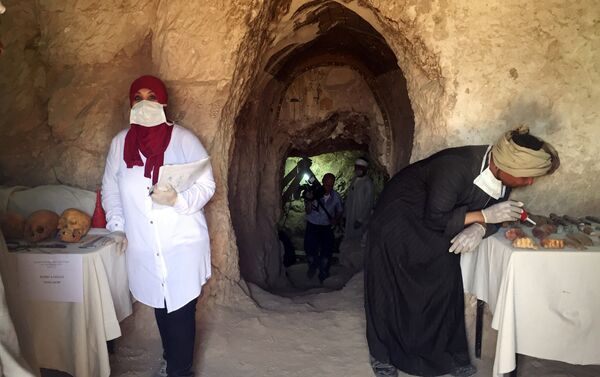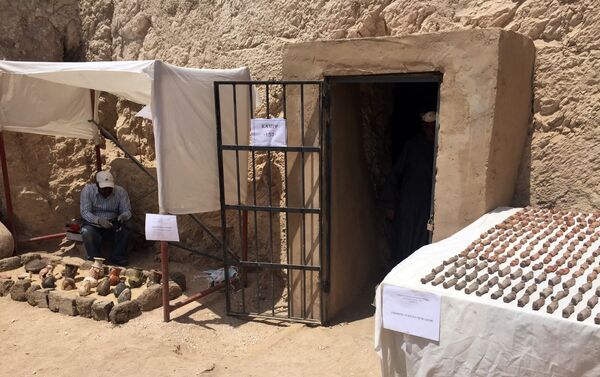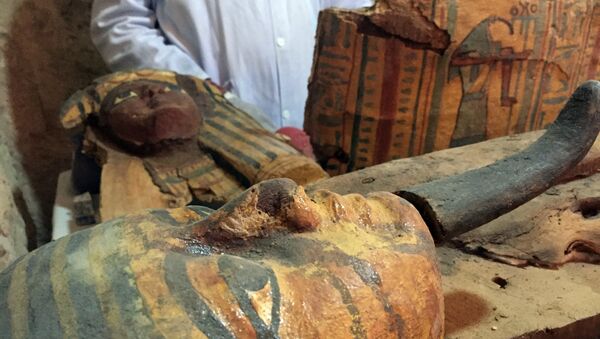Con casi 3.500 años de antigüedad, el sepulcro se sitúa cerca de la antigua ciudad de Luxor y el emblemático Valle de los Reyes. Se estima que podría pertenecer a Userhat, un noble magistrado que vivió en los tiempos de la XVIII dinastía (entre 1550 y 1295 a. C.) que poseía el título de juez de la ciudad.
"La tumba data de la XVIII dinastía, pero al parecer fue reutilizada durante la XXI dinastía (1070-945 a. C.), una época conocida como la de los 'saqueadores de tumbas'", indicó Mustafa Waziri, jefe de la misión arqueológica y director del Departamento de Antigüedades de Luxor.




La tumba presenta el típico estilo de los enterramientos de los nobles: tiene forma de letra 'T', con un patio abierto, una sala rectangular y una cámara interna, al final de la cual fue descubierto un escondite con los sarcófagos ornamentados. Los sarcófagos de madera, fraccionados pero bien conservados, habían sido decorados de vivos colores con personajes y motivos faraónicos, mientras que las momias en su interior fueron envueltas en una tela blanca.
Lea también: Bolivia recupera piezas arqueológicas peruanas que iban a ser llevadas a EEUU
Según el encargado de la excavación, la importancia del descubrimiento radica en la posición destacada que ocupaba el propietario de la tumba, pero sobre todo en el hecho de que se encuentra intacta. En la zona del hallazgo la mayoría de las tumbas habían sido ya descubiertas o estaban saqueadas, explicó Waziri.
El Gobierno egipcio aprobó varios proyectos arqueológicos con la esperanza de realizar nuevos descubrimientos. Recientemente, otro grupo de arqueólogos descubrió vestigios de una desconocida pirámide de 3.700 años de antigüedad en la necrópolis real de Dahshur, a solo 40 kilómetros al sur del Cairo.




